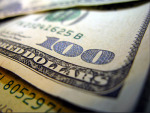Most U.S. $100 Bills Are Not In The United States Right Now
Well, that and illicit trade, like drugs and prostitution. What the Federal Reserve and the Secret Service have discovered, though, is that up to 2/3 of all hundred-dollar bills are circulating somewhere outside of the United States right now. (The Secret Service was originally founded to root out counterfeit currency, and only took on the task of protecting the President after the assassination of William McKinley in 1901. They still do the currency thing.) Twenty years ago, officials from both government agencies went to former Soviet countries and discovered that people were storing their money in U.S. dollars, with exchange posts located even in department stores so people could do last-minute exchanges for whatever the local currency was worth at the moment.
The argument for abolishing the hundred-dollar bill is as follows: most Americans don’t use them, many of the people who do use them are up to no good, and we have much easier ways to transfer cash around. The counter-argument is that each dollar bill in circulation makes the government a tiny bit of money, and criminals will always find some way to store and exchange money: after all, the European Central Bank has 100 and 500 euro notes that mean you can carry around even more value in a single bill.
Should We Kill The $100 Bill? [Planet Money]
Want more consumer news? Visit our parent organization, Consumer Reports, for the latest on scams, recalls, and other consumer issues.


